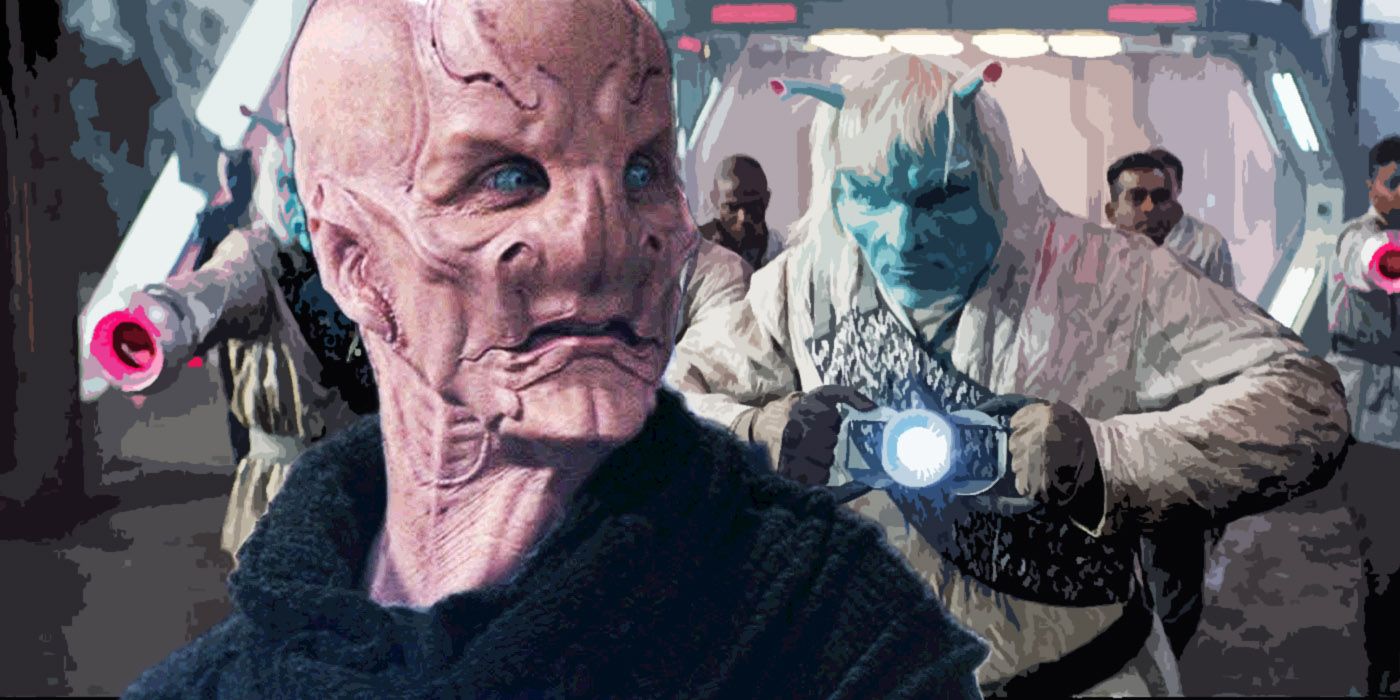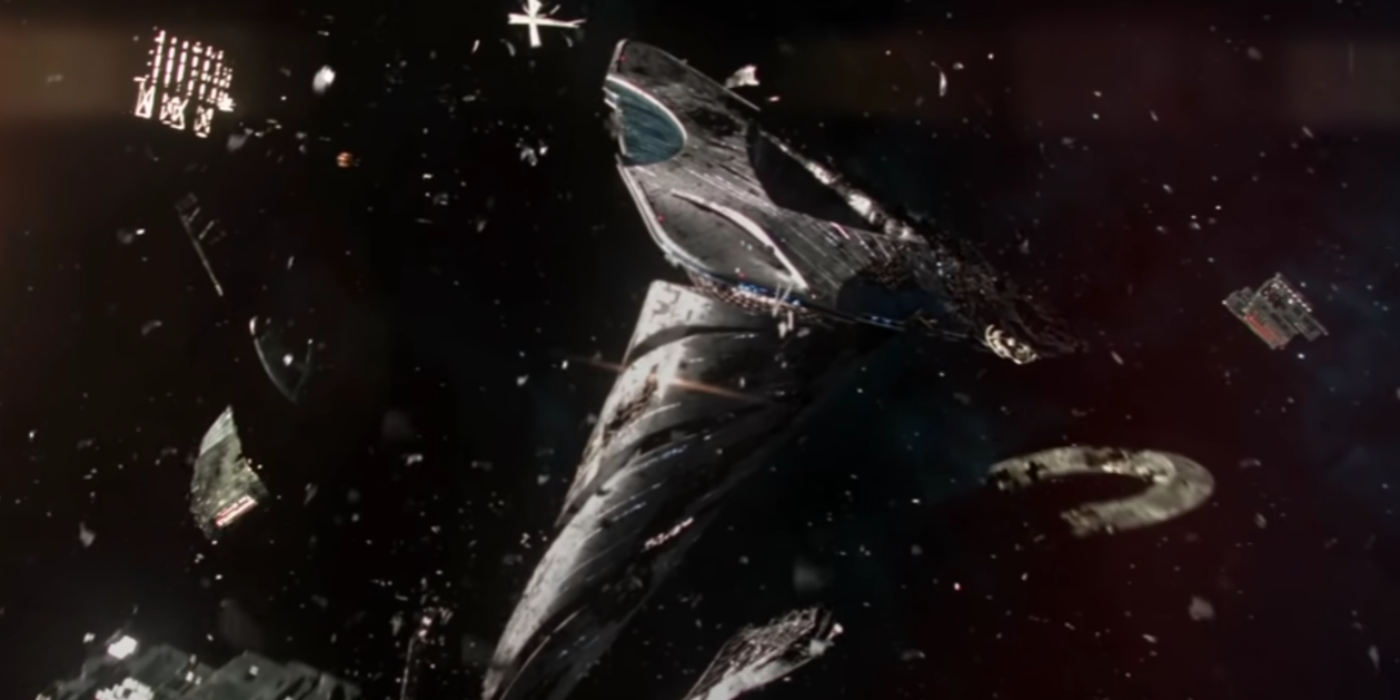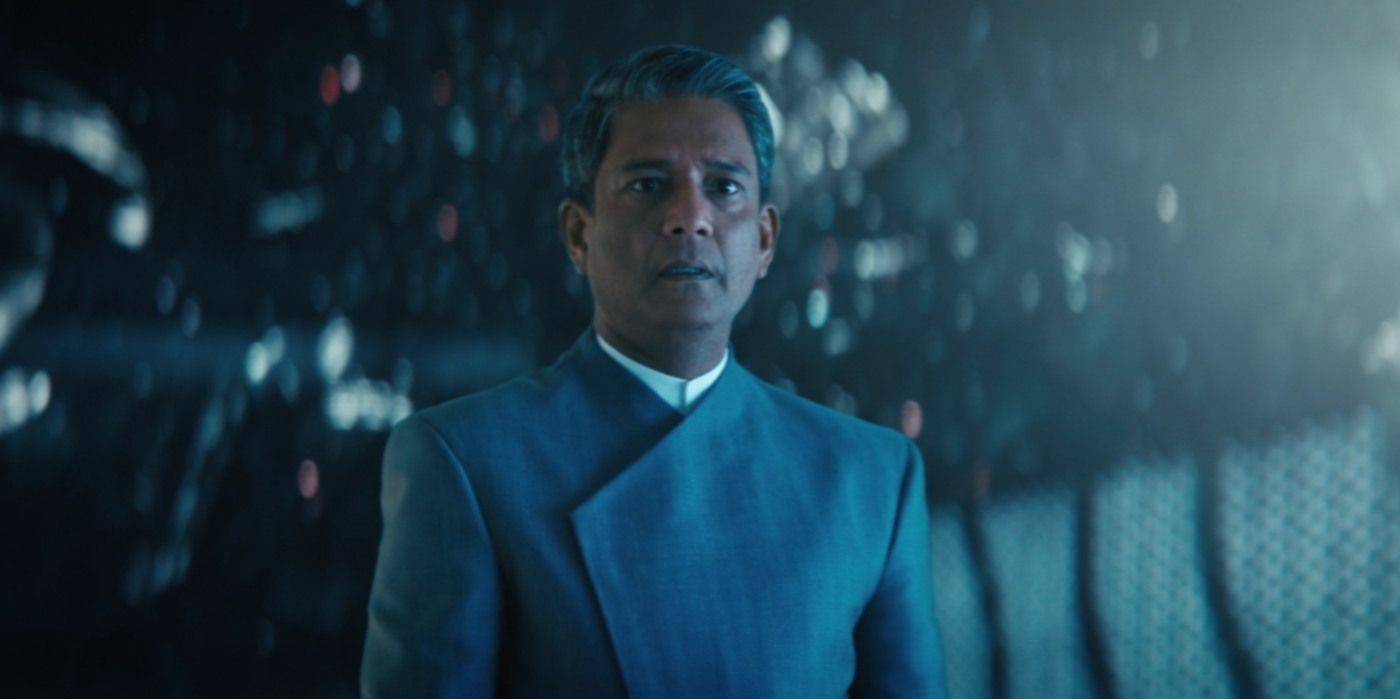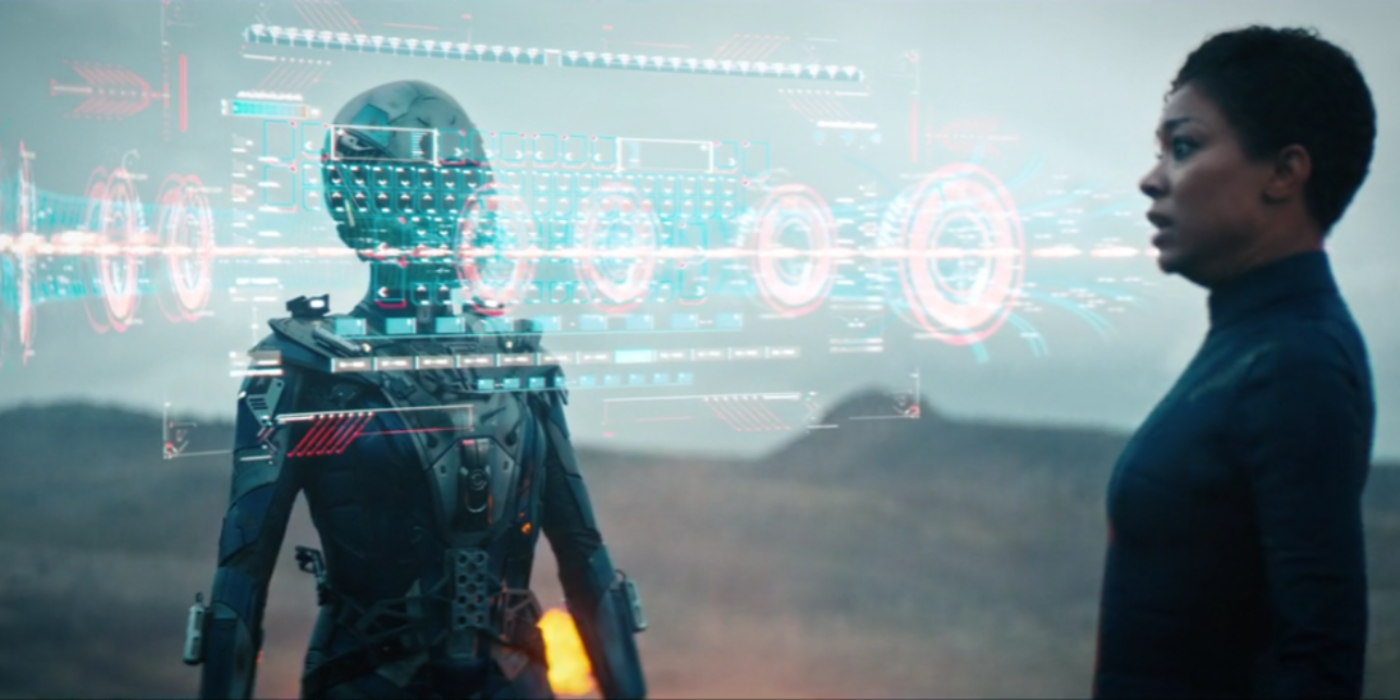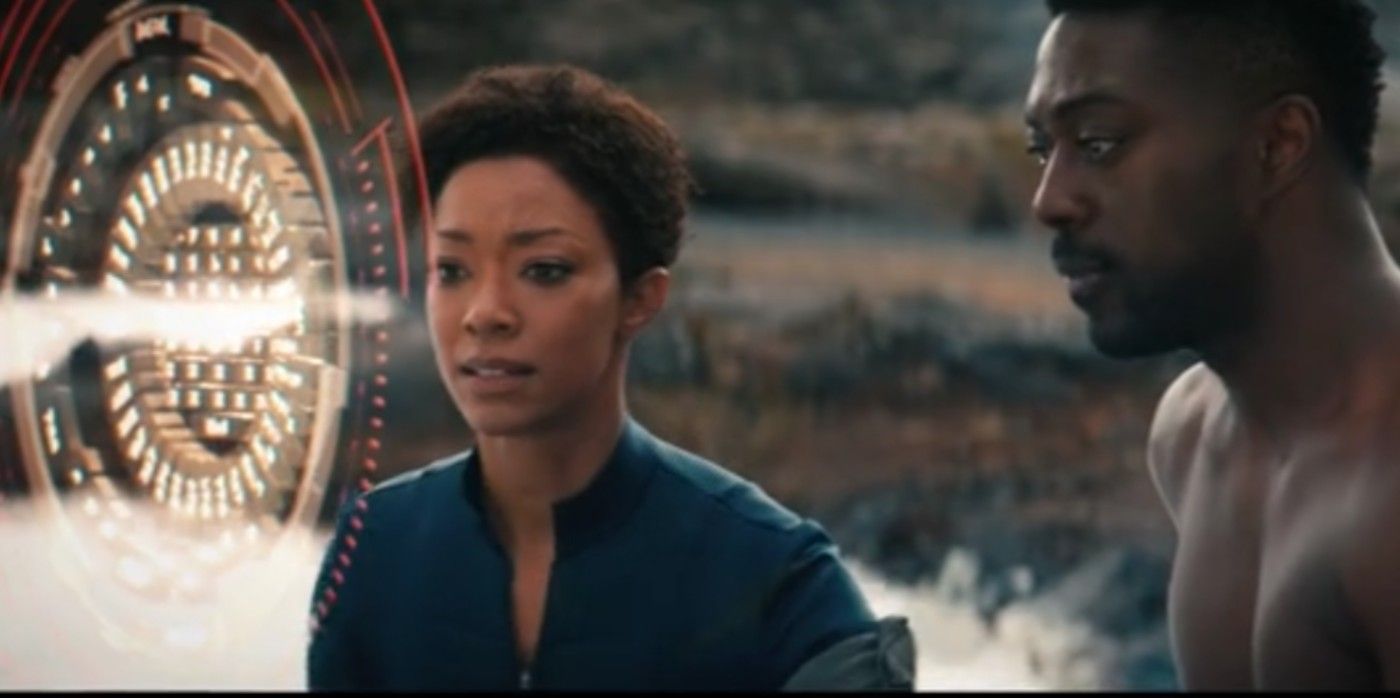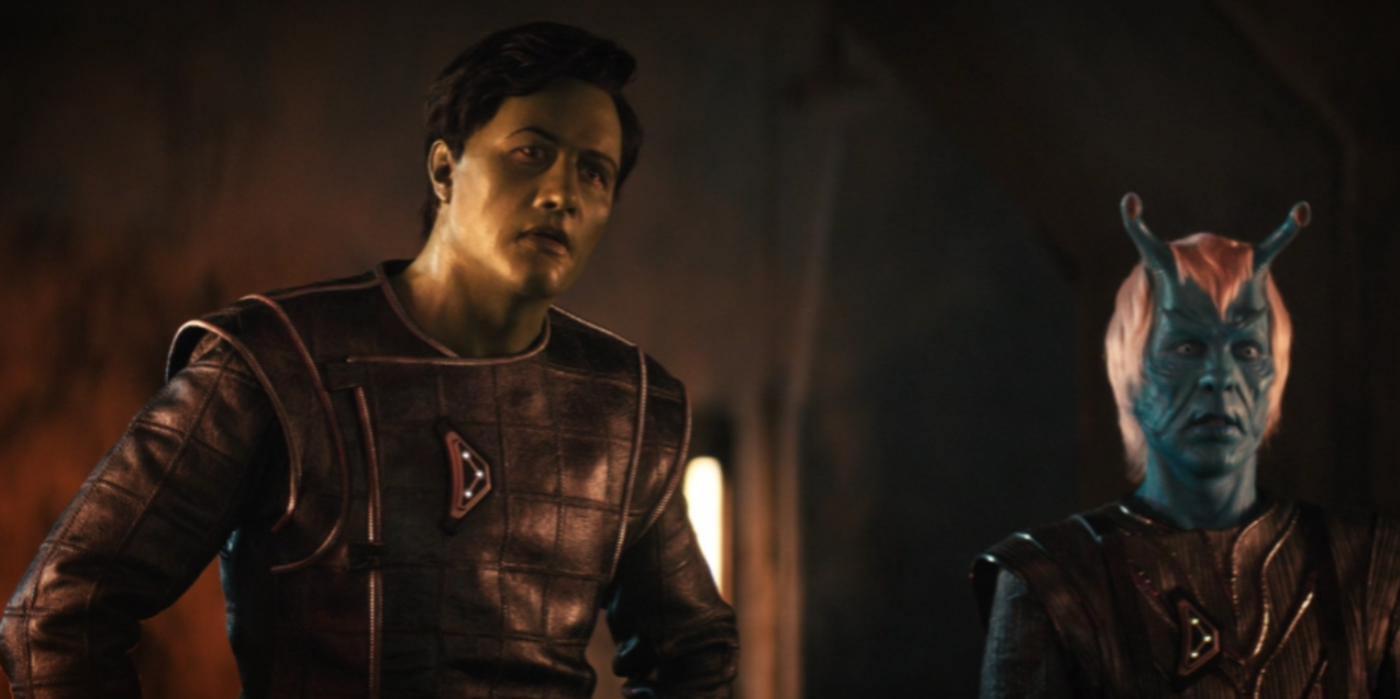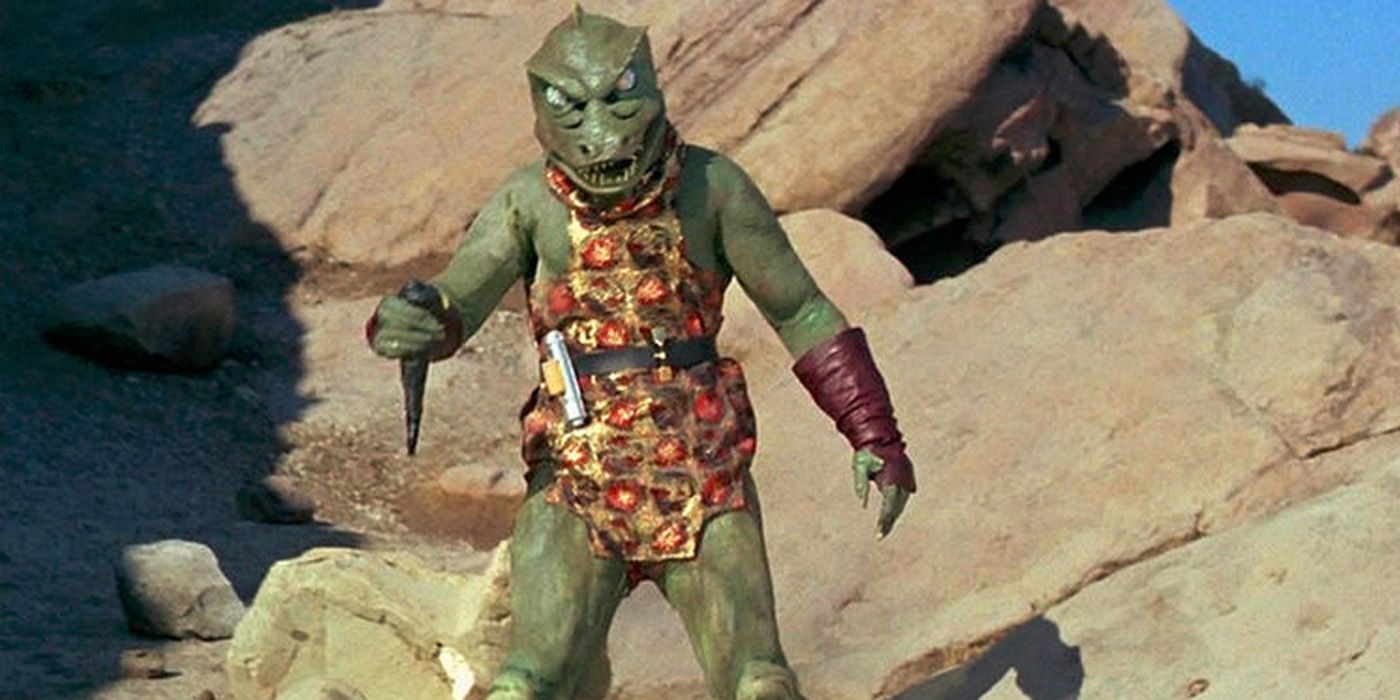Warning: SPOILERS for Star Trek: Discovery Season 3, Episode 1 - "That Hope Is You, Part 1."
Star Trek: Discovery season 3's 32nd century has brought huge changes to the galaxy, as Commander Michael Burnham (Sonequa Martin-Green) learned when she arrived (alone) in the year 3188. By rocketing forward 930 years, Star Trek: Discovery season 3 has boldly gone further than the franchise has ever explored before. The 32nd-century era is a wide-open frontier of possibilities, but Trekkers who were expecting to see the familiar galaxy they've followed in the other Star Trek series and movies had another thing coming - as did Michael herself.
Burnham landed in a distant future where the United Federation of Planets no longer exists, at least not anywhere near the scope it once enjoyed as the dominant galactic power in the Alpha Quadrant. A cataclysm called the Burn destroyed all of the dilithium in the galaxy a century before Michael appeared. Since dilithium is the heart of every warp-capable starship, this meant thousands of vessels spontaneously exploded and millions of lives were lost. This led to the fall of the Federation, which plunged the galaxy into chaos. But still, life goes on, just in a very different future than the era Michael left behind, when Starfleet was on the cusp of its glory years.
Star Trek: Discovery's 930-year time jump has already changed the flagship CBS All-Access Star Trek series for the better. With a boundless and fascinatingly different future ahead of it, Michael and the crew of the (currently missing) U.S.S. Discovery are unshackled from the canon of the prequel era, awkwardly nestled between Star Trek: Enterprise and Star Trek: The Original Series, that they uncomfortably inhabited. In season 3, Star Trek: Discovery finally gets to live up to its name and the show is free to chart the unknown future and deliver countless surprises. Here are the biggest changes to the galaxy Michael Burnham discovered in Star Trek: Discovery season 3, episode 1, "That Hope Is You, Part 1."
The Burn Destroyed Dilithium In Every Starship In The Galaxy
As Michael's first and only friend in the future, Cleveland "Book" Booker (David Ajala) succinctly phrased it, "The Burn was the day the galaxy took a hard left." In short, the Burn was a cataclysmic event sometime between 3068-3088 (100-120 years before season 3) where the dilithium inside every starship's warp core suddenly and simultaneously exploded. Dilithium is the power source behind warp drive and it is essential to every starship. No one knows what caused the Burn or whether the dilithium destabilized - not even the Federation. But it crippled the galactic power that dominated the Alpha Quadrant.
Without starships and the personnel aboard them, the Federation and Starfleet fractured and collapsed. Pockets of the Federation still exist but they are separated and isolated from each other, and there isn't enough dilithium to power anything close to the armada Starfleet once was. While it hasn't been clarified, it's logical to assume the Burn also devastated the other great powers in the Alpha Quadrant like the Klingons and the Romulans. But overall, there are simply far fewer starships operating in the galaxy, which is why couriers like Book are needed to transport goods and services across great distances to the remnants of civilization scattered all over the galaxy.
The Federation Is Broken But It Still Exists In Some Form
While the Federation is a shell of what it once was, its spirit remains undiminished. There are still true believers who attempt to hold what's left of the Federation together and try to uphold its lofty ideals in the hostile galaxy of the 32nd century. One such true believer is Aditya Sahil (Adil Hussein), a Federation liaison who has been living alone in a derelict Starfleet relay station for over forty years, hoping to make contact with others like him. Sahil comes from a legacy of Federation officials but he was never commissioned because "there was no one left to do it". Finally, Commander Michael Burnham gave him his long-awaited commission and asked him to serve as acting communications chief to search for her ship, the missing U.S.S. Discovery.
Unfortunately, the Burn also devastated starbases and Federation listening stations. Long-range sensors collapsed, cutting off communications across the vastness of the Alpha Quadrant for decades. The furthest Sahil can scan and send communications is thirty sectors and every other sector of space is in the same predicament. With few starships capable of warp drive, the Alpha Quadrant has been broken up into isolated space sectors.
Although the Federation is still hanging on in theory, it has lost virtually all of its authority since the hundreds of worlds that it used to govern have broken off to fend for themselves. Presumably this means the Federation Charter and Starfleet's General Orders are no longer being followed or enforced. This includes the Endangered Species Act that protects all manner of creatures from poachers all over the Alpha Quadrant. Book has taken it upon himself to save as many endangered species as he can, like the trance worm named Molly he stole from Cosmos (David Benjamin Tomlinson), so he can bring them to the safety of the planet Sanctuary Four.
All Time Travel Is Banned After The Temporal Wars
According to Book, time travel has also been banned in the 32nd century after the Temporal Wars. Introduced in Star Trek: Enterprise, the Temporal Cold War was a conflict that spanned centuries involving the Suliban and their mysterious 29th-century benefactor, the Sphere-Builders of the 21st and 22nd centuries, the Na'khul of the 29th century, and the Federation of the 31st century, including Daniels (Matt Winston), who recruited the NX-01 Enterprise's Captain Jonathan Archer (Scott Bakula).
After the Temporal Wars ended, time travel was made illegal and all time-travel technology was destroyed. Before she learned any of this, Michael also activated the Red Angel time suit's auto-destruct, which means there is no going back and Burnham is permanently part of the 32nd century. This effectively eliminates time travel as a story device for Star Trek: Discovery season 3 (at least for now).
New Technology Includes Personal Transporters And Programmable Matter
The 32nd century's technology largely appears to be an evolution of the tech already familiar to Star Trek fans that is available in the 23rd and 24th-century eras. Michael was most dazzled by the existence of personal transporters, which eliminates the need for transporter pads aboard starships and starbases. The personal transporters have a limitation of needing 30 seconds to recharge after use, but they're controlled by a small device that also doubles as a comm system.
Starships and starbases also have evolved their holographic technology and what was once only possible inside 24th-century holodecks are now commonplace. The starship La Sirena in Star Trek: Picard showed that holographic controls replaced touchpads by the end of the 24th century, but Book's ship and the derelict relay station Aditya Sahil lived in feature controls made of a dazzling new technology called programmable matter, which are nano-molecules that form preprogrammed shapes and vanish when not needed. In addition, Sahil's furniture aboard his relay station is also made up of programmable matter, while he seemed to use a personal transporter to summon the prized Federation flag he kept in a Starfleet container.
As for weaponry, Burnham's 23rd-century phaser is considered an antique compared to the evolved phasers and disruptors wielded by the Andorians and Orions. But the most impressive new weapon is a two-handed device that emits a kind of blast wave that can forcibly hurl groups of people back a few meters.
Andorians And Orions Are Working Together
Michael was shocked to learn that the Andorians and the Orions are now working together in the 32nd century. The blue-skinned and antennaed Andorians were founding members of the Federation while the green-skinned Orion Syndicate were (and remain) an intergalactic criminal empire, although in Star Trek: Lower Decks, Ensign D'Vana Tendi (Noel Wells) is Orion and she noted that many Orions have turned their back on organized crime since before 2375.
Related: Every Classic Star Trek Race In Discovery Season 3's Future
The opportunistic Orions and Andorian alliance regulate the use of couriers and they also tightly control the distribution of the limited amounts of dilithium. In the Mercantile, the couriers and their criminal network were overseen by Ithyk the Andorian (Brandon McGibbon) and Ithor the Orion (Jake Michaels). Although both were eaten and killed by Molly the trance worm, no doubt other Orions and Andorians will rise up and take their place to lord over crime on the planet Hima.
The Gorn Destroyed Two Lightyears of Subspace
A truly unexpected piece of information that Michael was shocked by was the Book telling her that the Gorn destroyed two lightyears of subspace. The reptilian humanoid Gorn are a classic Star Trek enemy alien species introduced in the TOS episode "Arena," when Captain James T. Kirk (William Shatner) memorably battled a Gorn captain at the behest of the Metron.
The Gorn have popped up in Star Trek: Enterprise and Ensign Sam Rutherford (Eugene Cordero) accidentally attended a Gorn wedding on Star Trek: Lower Decks. It's not clear when exactly in the last 930 years the Gorn somehow destroyed a section of subspace, but this is surely just one of what are bound to be countless changes and differences in Star Trek: Discovery season 3's 32nd century.
Star Trek: Discovery streams Thursdays on CBS All-Access and Fridays internationally on Netflix.

